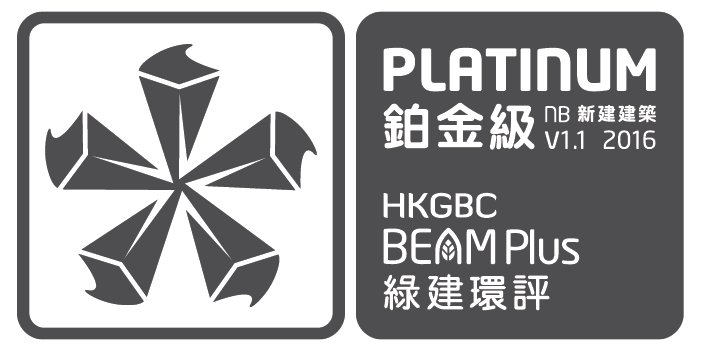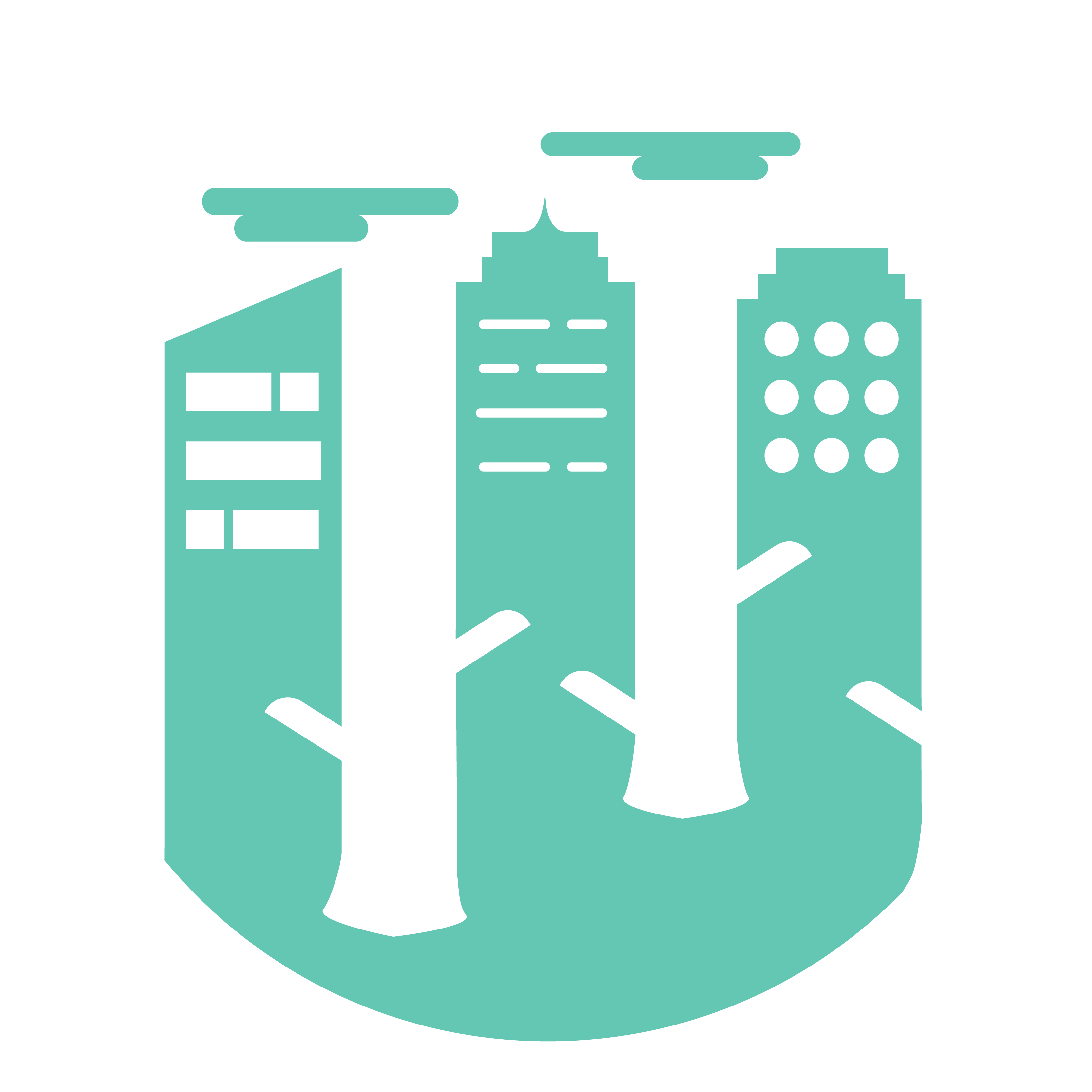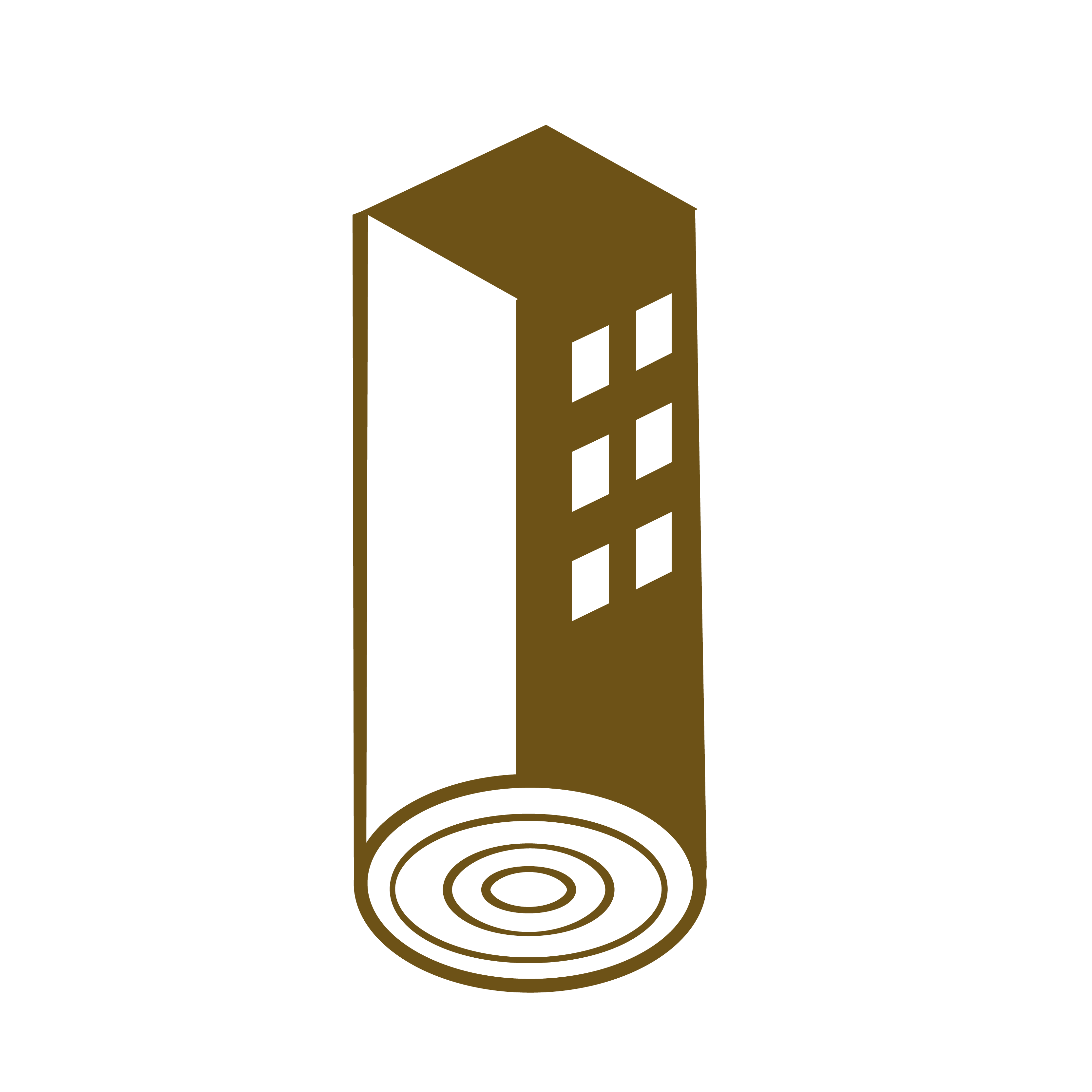


| 竣工年份 | 2014 |
| 樓宇數目 | 1 |
| 層樓 | 10 |
| 類別 | 政府,機構和社區 |
| 項目持有人/發展商 | 香港科技園公司 |
| 項目經理 | MACE Limited |
| 建築師 | 關善明建築師事務所有限公司 |
| 園境設計師 | 雅博奧頓國際設計有限公司 |
| 機電工程師 | 澧信工程顧問有限公司 |
| 土木及結構工程師 | 艾奕康有限公司 |
| 外牆顧問 | 希文森幕牆顧問有限公司 |
| 承建商 | 金門建築有限公司 |
| 工料測量師 | 利比有限公司 |
| 可持續設計顧問 | Cundall Hong Kong Limited |
| 聲學顧問 | 康冠偉顧問有限公司 |
香港科學園的創科生態圈發展蓬勃,繼第一期和第二期,科學園第三期為科技初創企業及規模龐大的科技公司提供更多空間。香港科技園公司致力推動以創新及科技,建構一個可持續發展的未來香港科技園公司,我們其中一個重點發展的科技群組是綠色科技。而科學園第三期採用綠色創意及科技,佔地6.24公頃,提供共105,000平方米用地,85%為科研辦公室,發展組合附有實驗室及配套支援服務,讓我們的科創生態圈不斷發展。
科學園第三期的發展分為兩個階段。第三期ab項目由三幢大樓及一個上落客貨區組成,而第三期c項目則由兩幢大樓組成。
科學園第三期的設計策略以可持續發展為目標,不但重視綠色科技應用,更突破傳統設計概念、建築方法及運作要求。當中以下幾方面特別受注目:
全面的可持續發展 — 透過結合最新的綠色科技及可持續發展的「回歸簡約」創新建築設計,實現整體可持續發展。
示範作用 — 透過減少碳及其他溫室氣體排放、提高能源效益,以及運用可再生資源,推動香港實踐可持續建築方法。
可再生能源目標 — 從能源成本效益入手,制定於科學園內使用可再生能源的藍圖。
綠色科技樞紐 — 驅動香港及珠江三角州的創新綠色科技發展。












1. As a green hub, Phase 3 offers the 150 businesses located there one of the best R&D eco-systems in the region for developing and commercialising their innovations.
2. The development itself is one of the largest showcases of sustainable construction practice in Hong Kong. Phase 3 is designed according to the key design principles of reduction, efficiency and generation.
3. Every building incorporates the latest green technologies and sustainable building design, with a focus on cost-effective energy-saving measures, making it easy for businesses there to adopt green practices.
4. Hong Kong Science Park Phase 3a and 3b has won the Grand Award in Green Building Award (“GBA”) 2014 – New Buildings Category – Completed Buildings.
5. It is a continuation of the Grand Award in GBA 2012 – New Building Category – Building Project under Design for Phase 3a and 3b.
6. On top of the newly-received Grand Award from GBA, the first three available buildings (B12W, B15W and B16W) at Phase 3 have also won the RICS - Sustainability Achievement of the Year Award 2015
What are the motivations to go “green”?
Hong Kong faces a number of environmental challenges including air quality, energy and water consumption, waste generation and ecological biodiversity. HKSTP is committed to doing its part and more to ensure these are mitigated for the long-term benefit of society. The Corporation adopts a systematic approach to identify and prioritise areas for action, implement improvement measures, and monitor their outcome to ensure that our operation continues to strive for improvement in resources efficiency and protection of our natural environment.
Green Technology
Science Park aims to become a hub for "Green Technology" in Asia Pacific through establishing and accelerating the growth of the Green Technology Cluster. We hope to turn Science Park into a 'living laboratory' where green tech solutions are developed, tested, and commercialised and to help grow a vibrant industry ecosystem that can encourage cutting-edge technology development to drive the local, regional and international green economy forward.
Living Laboratory
The planning, design and construction of Phase 3 have been conducted with sustainability as the key priority. It aims to become a ‘Living Laboratory’ that demonstrates green building design and promotes a green culture. It is also an excellent environment conducive to research and development of green technologies that will bring significant benefit to society.
For build up an Exemplary “Back to Basics” Green Ecosystem, the Phase 3 development sets out to be one of the largest showcases of sustainable construction practices in Asia. Supporting the realisation of this vision is a holistic execution approach permeated with shared value where all contributing parties of the entire process – from the people developing it to the people using it – aspire to play an active role in building a sustainable future.
The Phase 3 development is an exemplary manifestation of the “Back to Basics” principle, where designers started by meticulously scrutinising the site’s natural environment in order to establish the most sustainable design foundation before adding any related energy-saving elements. By combining the fundamentals of architectural design principles, sun, wind and space, with advanced technological tools on precise macro/micro‐climate simulations, the Phase 3 development successfully elevates passive sustainable building design to an exceptional level, resulting in a green and vibrant ecosystem conducive for collaboration between pioneering innovative minds, enterprising start-ups and multi-national corporations.
What are the major strategies to earn the credits and achieve the BEAM Plus rating?
Holistic Design Approach to Build An Integrated Sustainable Buildings
The Integrated Design Approach used by the design team fully encompasses every aspect of what is meant by the term “Sustainable Building”. This is different to the “bolt-on” design approach often adopted, where taken “Green” features are applied to an otherwise standard building built to minimum mandatory requirements.
This means that the design must not only incorporate sustainable and innovative architectural features, but also features that can efficiently address the primary function of the R&D offices, laboratories and the needs of the occupants to enhance the sustainability of operation that will ultimately bring maximum benefit to the users and nearby community.
We strive our utmost to ensure the spirit of sustainability is embedded in every aspect of the proposed design. As such, the design team has full integrated sustainability within the design process as opposed to merely making it a stage of the design process.
Demand Reduction Approach to Minimise Energy Consumption
The design team utilised the “Reduction Approach” to strategically avoid energy demand at first place, followed by high efficiency building services installations and lastly on-site renewable generation.
|
Steps to Take |
Definition |
|
Avoidance: |
This is of highest priority and produces the biggest savings with the least cost. The basis of this is simple, to avoid unnecessary use of resources and develop a building with significantly lower service energy requirements. |
|
Efficiency: |
Incorporation of advanced and efficient technology to reduce the energy requirement for servicing the buildings cooling, heating and lighting requirements |
|
Generation: |
The last step in reducing energy use is to offset a portion of the energy consumption via renewable or clean energy such as solar water heating installations. |
(a) Avoidance:
(i) Solar and Wind Optimised Building Orientation and Master Layout Plan
The Master Layout Plan of the phase 3 development was designed making best use of the site and its natural resources (sun, wind and rain). Buildings in phase 3 are positioned and orientated in a way that promotes natural site ventilation spatially, also with minimised solar footprint to reduce solar heat gain. Computational Fluid Dynamics (CFD) simulation and various simulations were conducted to fine tune our design to optimise the result.
(ii) High Performance Building Envelope
Various steps have been taken to lower solar penetration and thermal conductivity of the building. Stepping away from a conventional glass box design, buildings in HKSP3 are equipped with a high performance building envelope comprising the following element:
The above element together forms an ultra-high performance façade that is uncommon in the commercial buildings in Hong Kong. Dynamic Thermal Analysis and daylight simulation was used to fine tune the façade design to achieve the optimal balance between heat rejection and daylight provision.
(iii) Natural Ventilation of Offices
The HKSP3 team is determined to incorporate the often overlooked natural ventilation design in HKSP3 buildings. In Building 15W, a typical floor is installed with top and bottom operable windows which are incorporated into the façade for a single sided ventilation configuration. Dynamic Thermal Analysis simulation, CFD and thermal comfort analysis have been undertaken to study the performance of natural ventilation and fine tune the size and quantity of openings.
(iv) Reducing Heat Island Effect
To reduce heat island effect, extensive green coverage has been incorporated to approximate 40% of the site area to minimise solar heat absorption by the site. Related design elements are:
(v) Green Transport Plan and Cyclist Friendly
Our carpark provision strategy is designed in a way to encourage the use of public transport to travel from and to the HKSP3. We also provide electric vehicle charging facilities to promote the use of Electric Vehicles. The Hong Kong Science and Technology Park Corporations also provides shuttle bus services to encourage the use of an efficient form of transport.
Cyclist will find HKSP3 an extremely friendly facility with the provision of cycle track, cycle parking and even shower facilities. Members of the Park are motivated to cycle from and to HKSP3 hence reducing the use of gas-consuming transportation.
(b) Efficient Use of Resource
(i) Ultra Efficient AC
Cooling energy is the largest end use of energy in buildings, the HKSP3 team have placed substantial focus to design an ultra-efficient AC system which comprises the below features:
(ii) Efficient Lighting Design and Controls
A low energy lighting design with 300 lux is incorporated with both daylight and occupancy sensor. The lighting and control strategy is coordinated with the natural daylight provision to maximise saving.
(iii) Water Efficient fittings and fixture
Water efficient fittings and fixtures are used to achieve a reduction of 44% in potable water usage and 52% in waste discharge.
(c) Generation and Recycling of Resources
(i) Rainwater Harvest & Greywater Recycled System with Water Efficient Irrigation System
Water usage on irrigation are often overlooked, the sustainability of the landscape can be achieved firstly by selecting native and adaptive species to lower irrigation demand, together with an extensive rainwater harvest and greywater collection system with weather controlled low pressure drip irrigation system. The team targets a net zero potable water usage for irrigation.
(ii) Solar Hot Water Systems
The project has incorporated Solar Hot Water panels to offset some energy usage contributing to the HKSP long term goal.
(iii) Battery Recycling program
The existing HKSP battery recycling program will be extended to HKSP3.
Green Procurement Principles of the Project
The project team is cautious towards Green Procurement. All related procedures have been done through careful evaluation with the following aspects and criteria:
- Occupant Health & Well-Being Consideration - All internal finishes will use low VOC, low Radon, and low Formaldehyde substance to lower toxin emission that hampers indoor air quality
- Minimised Construction Waste - design approach seeks to avoid the generation of construction waste and use modular/prefabricated materials wherever possible.
- Sustainably Sourced materials - Use of Regional Materials, FSC certified timber
- Reduced Global Environmental Impact - no CFCs, HCFCs and/or Ozone Depletion, Reduced Mercury Containing Products
Tenant and Public Engagement & Operational Energy Monitoring and Performance Improvement
(i) Tenant Energy Usage Feedback system
Provisions have been made to allow tenant, with their permission, to connect their electricity meter to the central building management system. Thermal meters have been incorporated to allow the measurement of chilled water usage of tenant space. Interface will be provided to the tenant to allow them to access and understand their energy usage including both electricity and AC, empowering tenant with a platform for improvement.
(ii) Green educational programme
The HKSP3 development extends our green mission through the provision of a green education programme which aims to influence and educate both visitors to the Park and tenants on sustainability and promote culture change.
Such programme includes:
- Fixed signage illustrating sustainable feature of HKSP3
- Electronic display showing system performance and saving achieved, also advising viewers the following
Energy saving of different system;
Water saving of different system;
Whether the weather is suitable for natural ventilation
- Green tour mobile apps allowing visitors to follow a guided tour of the education programme
What are the main obstacles during the certification process? And how would you tackle them?
Technical Challenges
- Rigorous computational fluid dynamics to predict wind availability and wind amplification across the Phase 3 development were carried out to demonstrate credit compliance and enhance pedestrian outdoor thermal comfort.
- Advanced thermal model simulations were carried out to detail the design of appropriate windows opening, shading device and the natural ventilation capacity of the building so as to achieve optimum performance.
- Neighbourhood impact simulations to optimise building form design to demonstrate credit compliance
- Predict the energy consumption of the Project and the annual usage of whole Phase 3 in order to set a operational energy target.
BEAM Final Assessment Documentation
- To ensure the deliverables from Main Works Contractor meet credit compliance for BEAM Final Assessment, this required a joint effort from the Consultant and the Project Management team to ensure each party was properly briefed and understood all the required BEAM submission documentation requirement such as the correct declaration letters for sustainable materials and the relevant measurement.
Apart from the BEAM Plus rating, what do you consider the key project success? What are the expectation for the future users of the building?
Education and Public Display of Green Performance and features
The entire educational program for the Phase 3 development consists of three major components:
As a tool for propagating environmental and human health benefits of green building practices and how building occupants or the public can help improve building energy performance, the overall concept manifests a cultural change in Hong Kong Science Park campus. It also acts as a showcase to enable the general public to witness how the spirit of sustainability can be carried out in a commercial setting.
Please note the project has claimed item 2 EPMS Real Time Display for the BEAM Certification Innovation credit.
The EPMS captures the real time weather condition, energy and water consumption and communicate the knowledge with the public and tenants. This increases the public awareness of the environmental impact, the history and the sustainable progress and improvement.
Green Culture
The completion of Phase 3 will not only expand the technology community in Science Park but also provide additional laboratories, advanced equipment, meeting facilities and cooperative spaces. It also opens up boundless development and support network for all. Before its opening, Phase 3 has already attracted 53 leading technology companies from 10 countries and regions to set up their research and development offices there. To put green culture in practice, HKSTP introduced the “Green Lease” to all companies in Phase 3. Under this framework, all partner companies will play an instrumental role in energy saving, such as taking part in the Park’s energy usage monitoring scheme. Under the scheme a smart system will collect electricity usage data from the companies, while the companies can in return access this information to formulate their own energy management strategy. The "User Pays" principle is another initiative to encourage partner companies in Phase 3 to reduce energy consumption. In terms of passive design, Phase 3 sees a wide range of building features. For example, optimisation of the wall-to-window ratio, provision of clean energy transportation friendly facilities such as bicycle parking space and cycling track, as well as hybrid and natural ventilation system for all buildings.
Simultaneously, Science Park Phase 3 incorporated 39 sustainable design features, including full LED energy saving luminaries lighting system, thermal energy storage system, water curtain, and solar cooling system. To promote green culture and related technology applications to the public, HKSTPC launches "Green Trail", a guided tour to enable the public to take a closer look at the green building features and develop ideas for their own green living plan.
Hong Kong Science Park Phase 3 development exemplifies the three key environmental concepts of reduction, efficiency and generation. The first three buildings are officially open today while the completion of the remaining two will happen in two years’ time. When the entire Phase 3 campus is completed, Science Park is expected to accommodate over 600 partner companies and over 14,000 engineers, scientists, researchers, technology entrepreneurs and support staff.
Any other contents you would like to include in the Stories:
Hong Kong's growth over the past decades has given rise to a number of environmental challenges. The air and water quality has deteriorated due to polluting activities within and near Hong Kong. Urbanisation has created the need for water, building and transport infrastructure, resulting in additional stress on the environment.
All of these imply that the need for green tech solutions has never been greater. Various initiatives to reduce Greenhouse Gas (GHG) emissions and promote environmental protection have created new business opportunities for technology companies in areas including building energy efficiency, environmental solutions, alternative energy, waste disposal and recycling, electric vehicles, and green electronics for infrastructure projects and carbon audits.
All of us at Science Park strive to facilitate sustainable technological innovations to turn to viable commercialised projects that bring benefits to the community. Through nurturing entrepreneur-minded talents and connecting them with enabling parties from around the world, we have accelerated knowledge-based economic developments and social improvement in Hong Kong over the years. With the opening of the Phase 3 development, we are excited to see more and more eager players of different countries of origin and from different aspects of the innovation ecosystem converging here to take advantage of this leading-edge facility, fueling the growth of a technology hub which is set to be one of the most vibrant breeding grounds in Asia.
| 竣工年份 | 2014 |
| 樓宇數目 | 1 |
| 層樓 | 10 |
| 類別 | 政府,機構和社區 |
| 項目持有人/發展商 | 香港科技園公司 |
| 項目經理 | MACE Limited |
| 建築師 | 關善明建築師事務所有限公司 |
| 園境設計師 | 雅博奧頓國際設計有限公司 |
| 機電工程師 | 澧信工程顧問有限公司 |
| 土木及結構工程師 | 艾奕康有限公司 |
| 外牆顧問 | 希文森幕牆顧問有限公司 |
| 承建商 | 金門建築有限公司 |
| 工料測量師 | 利比有限公司 |
| 可持續設計顧問 | Cundall Hong Kong Limited |
| 聲學顧問 | 康冠偉顧問有限公司 |